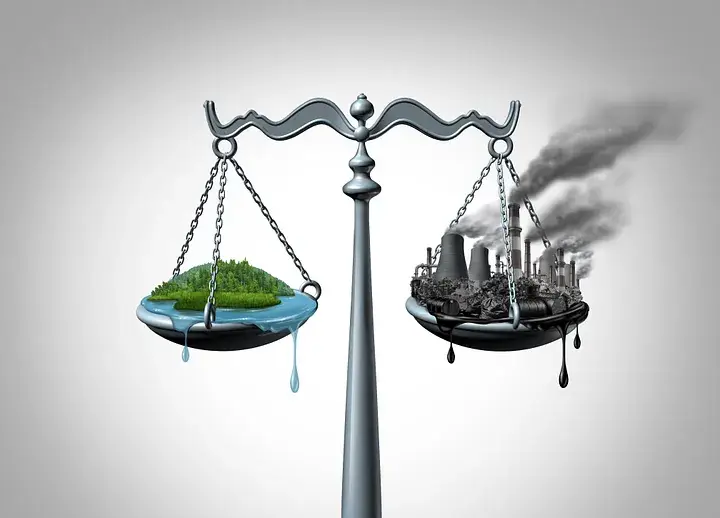
SAN JOSE – In the face of escalating concerns over climate change, the urgency to combat greenhouse gas emissions has reached critical levels. As the world grapples with the need to transition to a sustainable future, carbon credits and carbon offsets have emerged as essential tools in the fight against climate change. Originating from international agreements such as the Kyoto Protocol and the Paris Agreement, these mechanisms provide avenues for countries, corporations, and individuals to actively participate in efforts to mitigate climate change. This comprehensive guide explores the fundamentals of carbon credits and carbon offsets, their role in compliance and voluntary markets, their lifecycle, and the opportunities and risks associated with these emerging markets.
The Evolution of Carbon Markets:
Carbon markets have evolved over time, with their inception dating back to the late 1990s with the Kyoto Protocol. Initially signed by 180 countries, the protocol aimed to limit or reduce greenhouse gas emissions from industrialized nations while allowing developing countries voluntary targets or exemptions. It introduced market-based mechanisms, including the Clean Development Mechanism (CDM), Joint Implementation (JI), and International Emissions Trading (IET) mechanism, to facilitate emission reduction efforts and private sector participation. Building on the Kyoto Protocol, the Paris Agreement expanded the scope by including both industrialized and developing countries in setting emission reduction goals. It also introduced new market-based mechanisms like the Sustainable Development Mechanism (SDM) and internationally transferred mitigation outcomes (ITMOs) to promote carbon offsets and trading.
Understanding Carbon Credits and Carbon Offsets:
While carbon credits and carbon offsets are often used interchangeably, they have distinct characteristics. Carbon credits represent the right to emit a specific amount of greenhouse gases, usually one metric ton of carbon dioxide equivalent (CO2e). These tradable permits are issued under compliance markets, such as cap-and-trade systems, enabling entities to meet emissions limits. Conversely, carbon offsets represent the removal or avoidance of a specific amount of greenhouse gases from the atmosphere. They can be generated through projects that reduce emissions (avoidance projects) or projects that remove emissions (removal or sequestration projects). Carbon offsets are commonly used in voluntary markets to support corporate or individual environmental commitments, but they can also be approved for compliance markets under certain conditions.
Compliance and Voluntary Carbon Markets:
Carbon markets can be classified into compliance markets and voluntary markets. Compliance markets operate under regulatory frameworks that require entities to meet emissions caps or reduction targets. These markets facilitate the trading of carbon credits to ensure compliance with regulatory obligations. Examples of compliance markets include the European Union Emissions Trading System (EU ETS) and California’s cap-and-trade program. On the other hand, voluntary markets operate outside regulatory requirements, allowing companies and individuals to voluntarily offset their emissions. Participants in voluntary markets can invest in carbon offset projects, purchase and retire carbon offsets, or trade them to support their environmental goals. Voluntary carbon marketplaces, such as the American Carbon Registry, Verra, the Gold Standard, and the Climate Action Reserve, provide platforms for trading and verification of carbon offsets.
The Lifecycle of a Carbon Offset:
A carbon offset undergoes various stages in its lifecycle, from project design to retirement. These stages typically include design and screening, initial compliance audit, project development, financing and implementation, operations audit, certification and issuance, offset trading phase, and retirement. The project sponsor designs the carbon offset project, undergoes screening and compliance audits by third-party verifiers, develops and implements the project, and undergoes operations audits to ensure the anticipated emissions reductions. Upon successful verification, the registry issues the carbon offsets, which can then be traded on various platforms. Finally, an end consumer purchases and retires the carbon offset, indicating its use in offsetting emissions.
Valuing Carbon Offsets:
The value of a carbon offset depends on several factors, including its vintage, project type, and certification standards. The vintage refers to the year in which the emissions were avoided, with newer vintages often carrying higher value due to increased quality and assurance of additionality. The type of project also influences the value, with removal projects generally commanding higher prices than avoidance projects. Additionally, the certification standards of the issuing registry play a significant role in determining the value of a carbon offset. Registries such as the American Carbon Registry, Verra, and the Climate Action Reserve establish rigorous standards to ensure the credibility and environmental integrity of carbon offsets.
Opportunities and Risks in Carbon Markets:
Carbon markets present both opportunities and risks for participants. For companies, engaging in carbon markets allows them to demonstrate their commitment to sustainability, achieve emissions reduction targets, and enhance their environmental reputation. It can also provide financial benefits through the sale of carbon offsets or cost savings through emission reduction projects. However, participation in carbon markets comes with risks, including regulatory uncertainty, market volatility, reputational risks, and challenges associated with accurately quantifying emissions reductions. It is crucial for participants to navigate these risks through robust due diligence, strategic planning, and adherence to recognized standards and guidelines.
Carbon credits and carbon offsets play pivotal roles in global efforts to combat climate change. From their origins in international agreements to the establishment of compliance and voluntary markets, these mechanisms provide pathways for emission reductions, environmental stewardship, and the transition to a low-carbon economy. Understanding the fundamentals of carbon credits and carbon offsets, along with their valuation, lifecycle, and associated risks, is crucial for stakeholders seeking to make a meaningful impact on the health of the planet. As the world strives towards a more sustainable future, the effective utilization of carbon markets will play a vital role in achieving our climate goals and safeguarding our environment.


